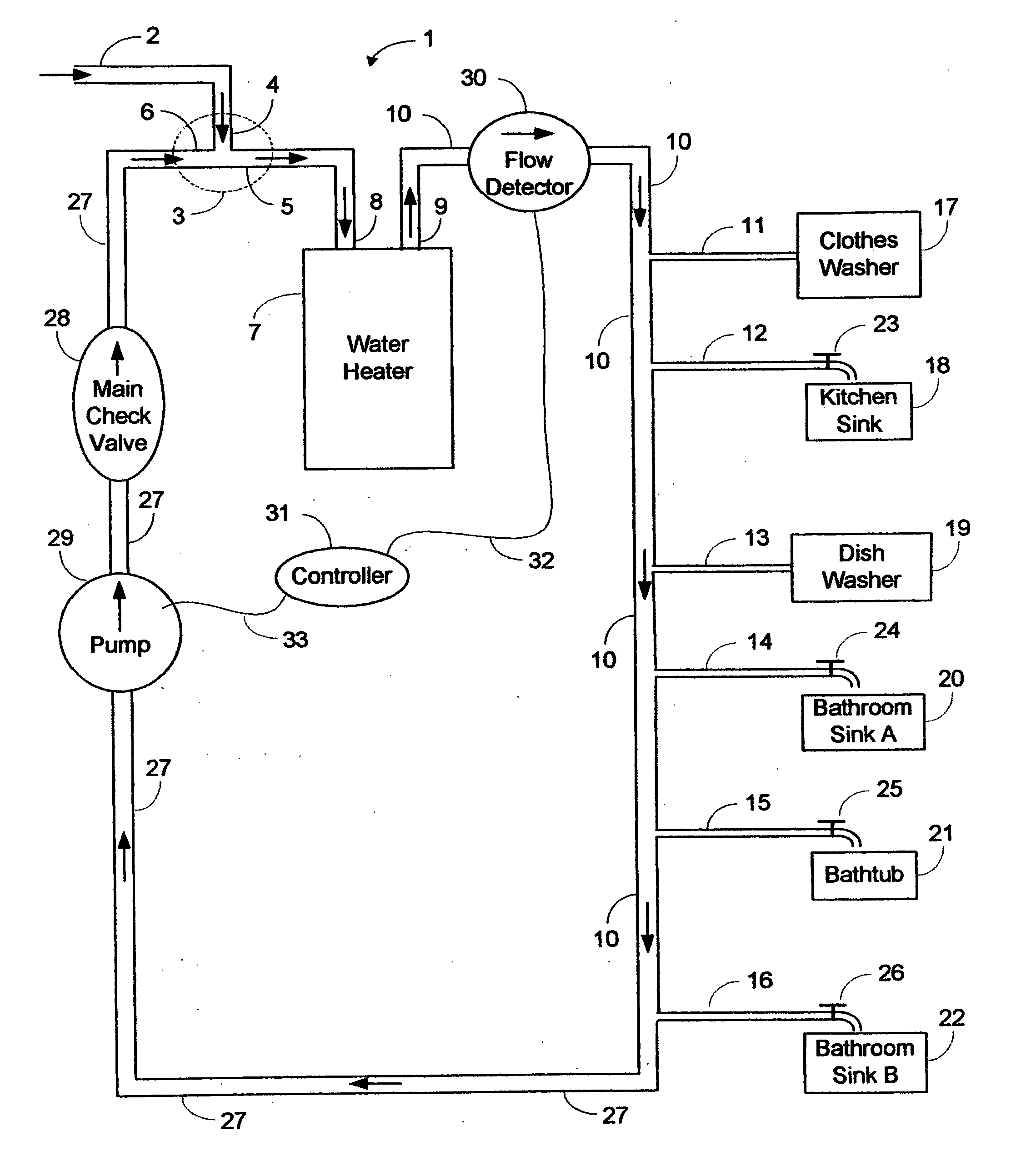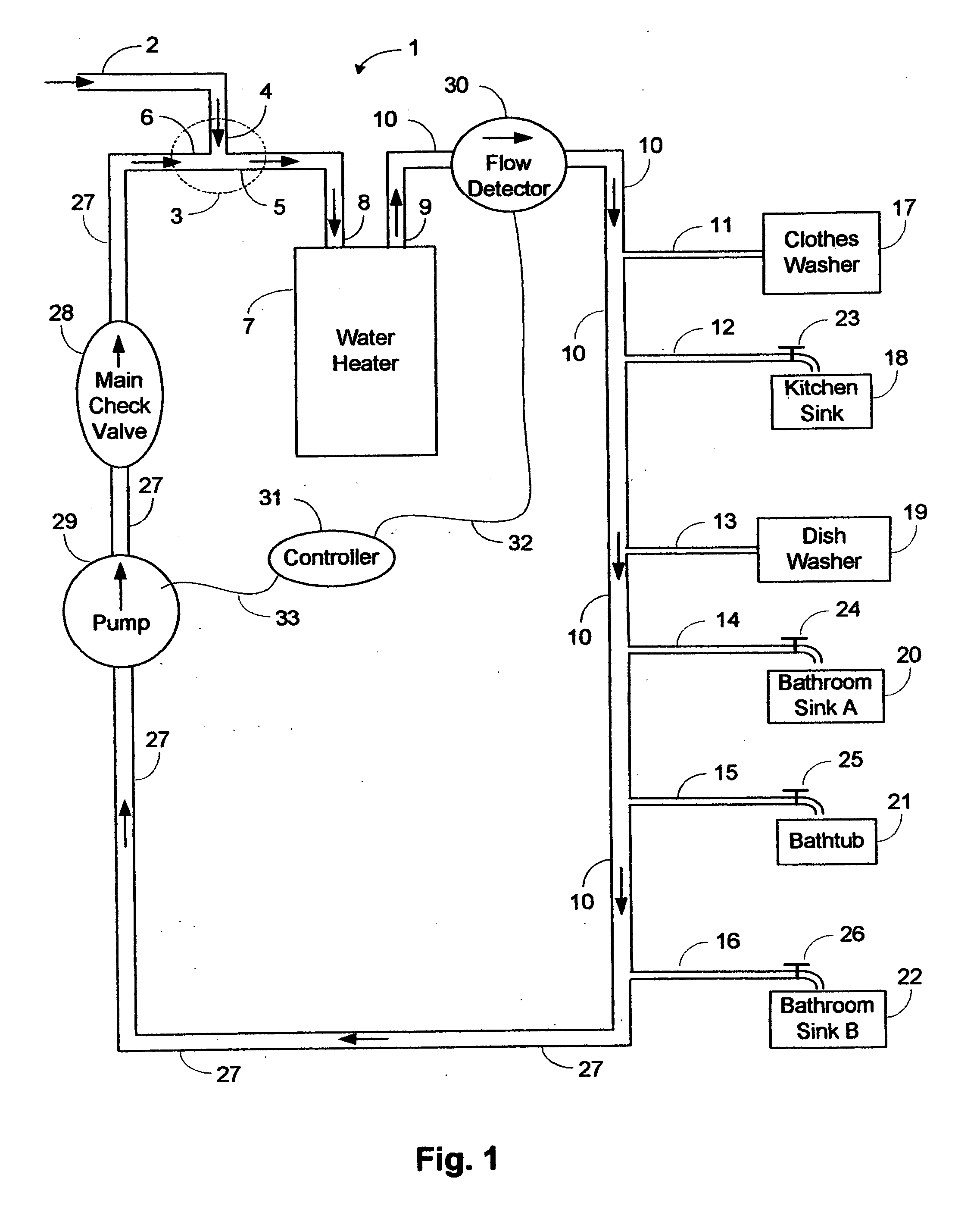Water conservation / hot water recirculation system utilizing timer and demand method
a water conservation and hot water recirculation technology, applied in domestic hot water supply systems, lighting and heating apparatuses, heating types, etc., can solve the problems of water initially coming out cold, substantial amount of residual cold water, and typically flowing directly into the drain
- Summary
- Abstract
- Description
- Claims
- Application Information
AI Technical Summary
Problems solved by technology
Method used
Image
Examples
Embodiment Construction
[0016]FIG. 1 shows the invention in its most general form. Cold water enters the system 1 through a source pipe 1, which connects to a main tee pipe 3. From there cold water flows out one port 5 of the main tee pipe to the inlet 8 of the water heater 7. Hot water flows out of the water heater 7 through its outlet 9 and into a hot main pipe 10, which feeds hot branch pipes 11-16 leading to various stations 17-22. The branch pipe at 11 is the nearest branch pipe to the water heater 7. Stations 17 and 19 are automatic stations. Stations 18 and 20-22 are manual stations, each having hot water faucets 23-26. Station 22 is the farthest manual station from the water heater 7. After reaching the farthest manual station 22, the hot main pipe 10 feed into a return pipe 27 which leads back to the main tee pipe 3, thereby completing the recirculation loop. A main check valve 28 is located on the return pipe 27 to prevent cold water from the source pipe 1 flowing through the return pipe 27 to th...
PUM
 Login to View More
Login to View More Abstract
Description
Claims
Application Information
 Login to View More
Login to View More - R&D
- Intellectual Property
- Life Sciences
- Materials
- Tech Scout
- Unparalleled Data Quality
- Higher Quality Content
- 60% Fewer Hallucinations
Browse by: Latest US Patents, China's latest patents, Technical Efficacy Thesaurus, Application Domain, Technology Topic, Popular Technical Reports.
© 2025 PatSnap. All rights reserved.Legal|Privacy policy|Modern Slavery Act Transparency Statement|Sitemap|About US| Contact US: help@patsnap.com



